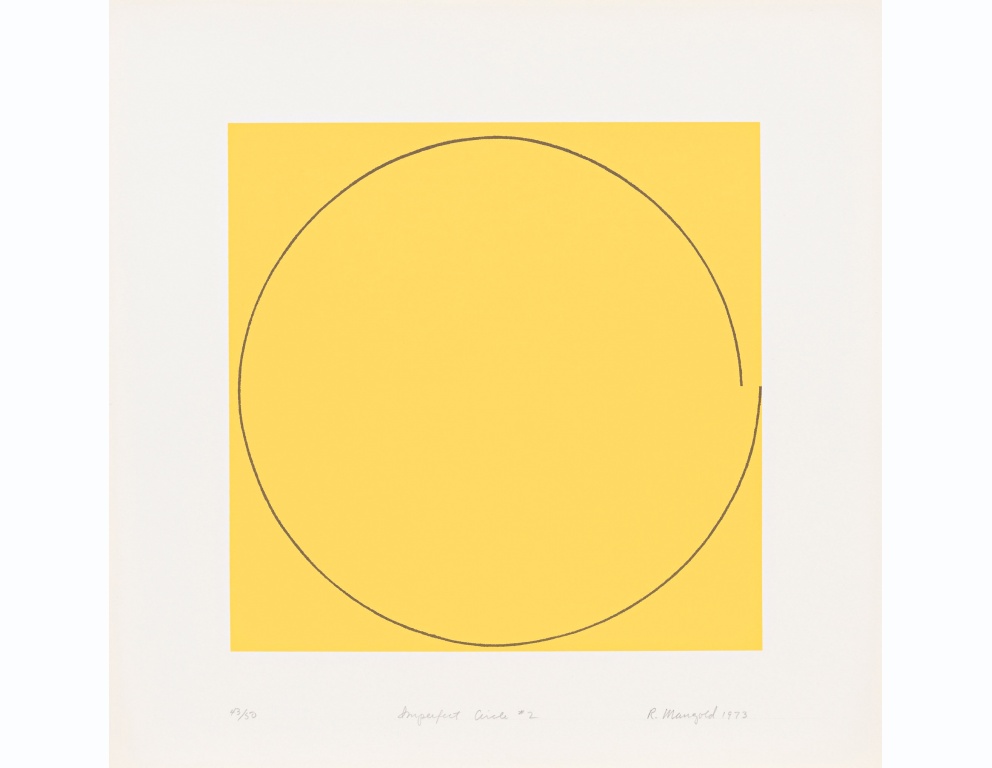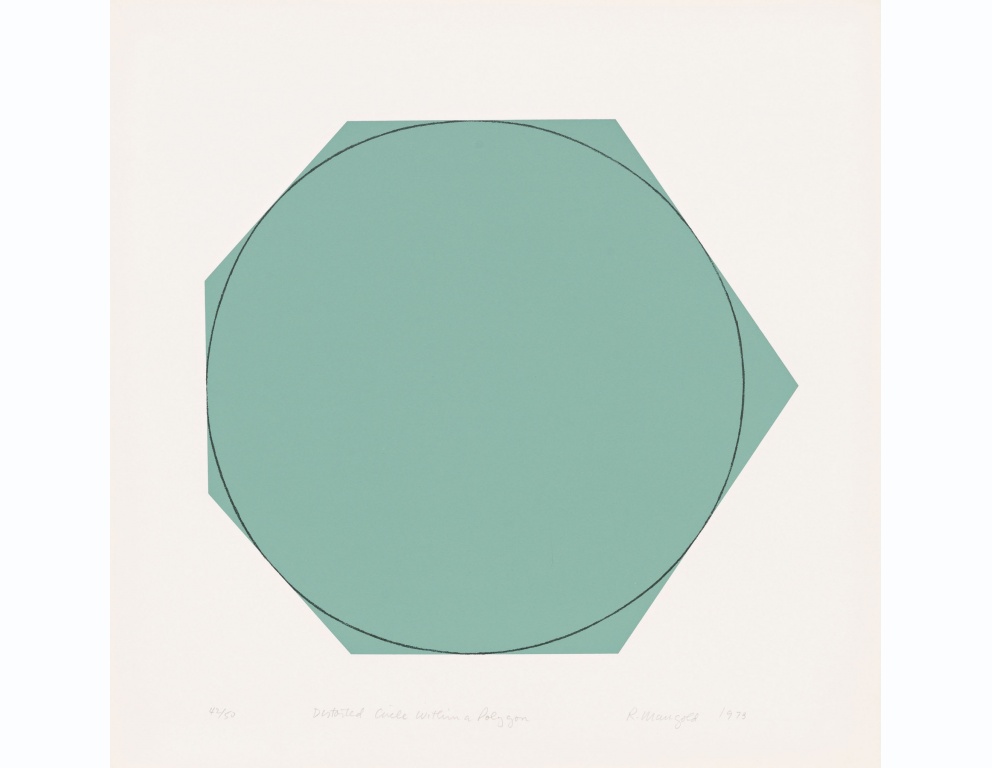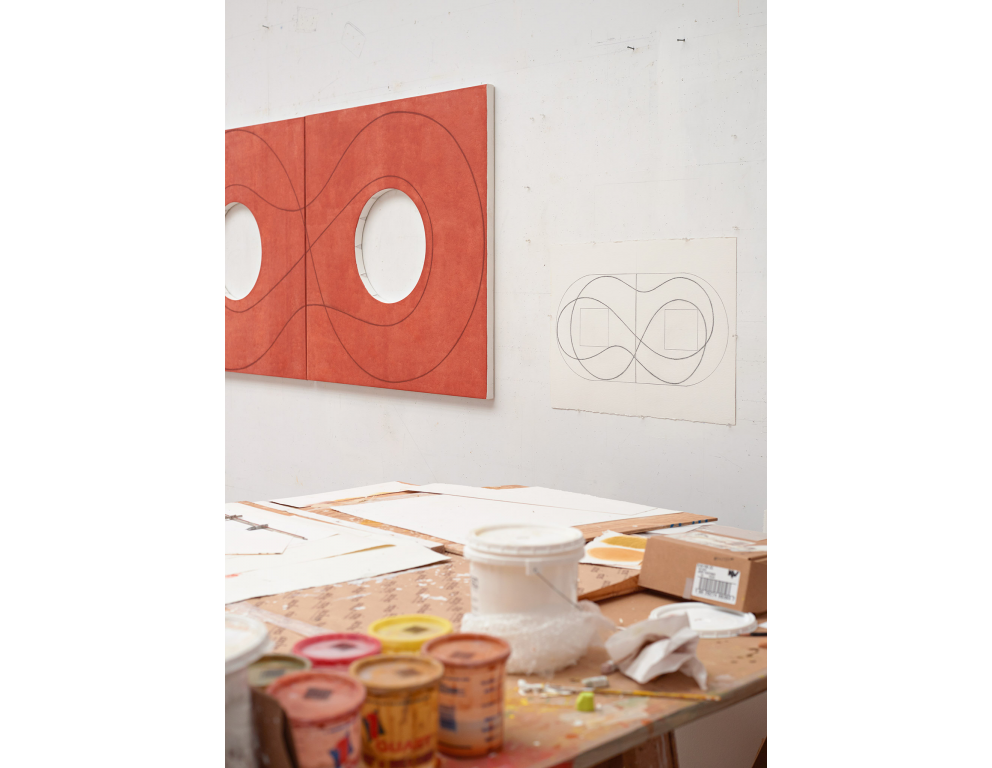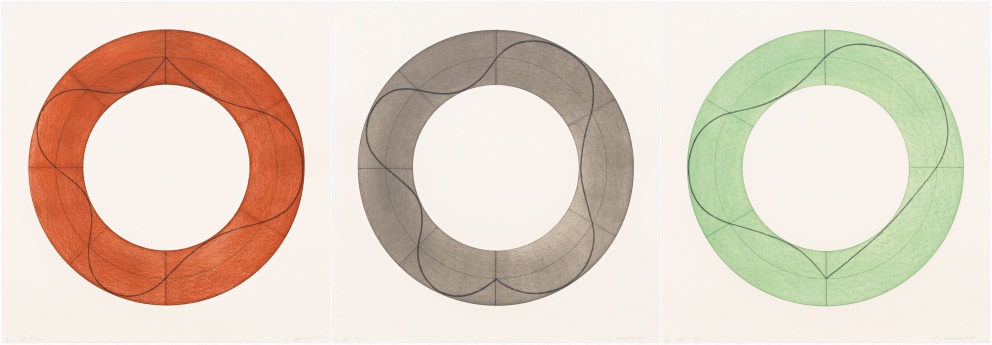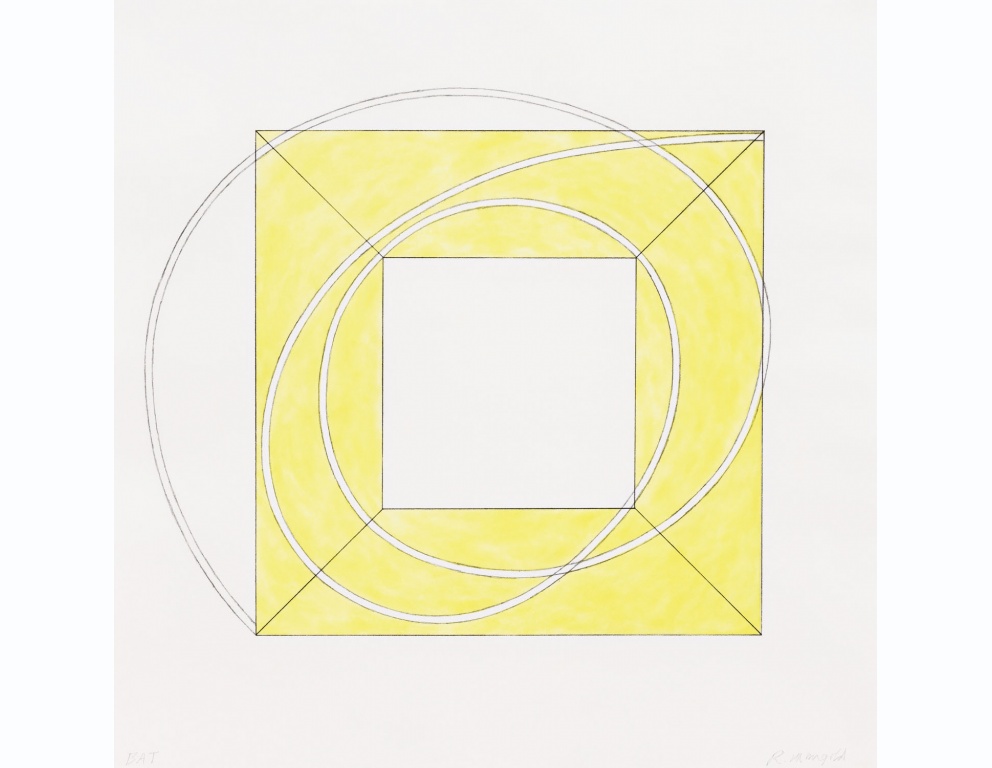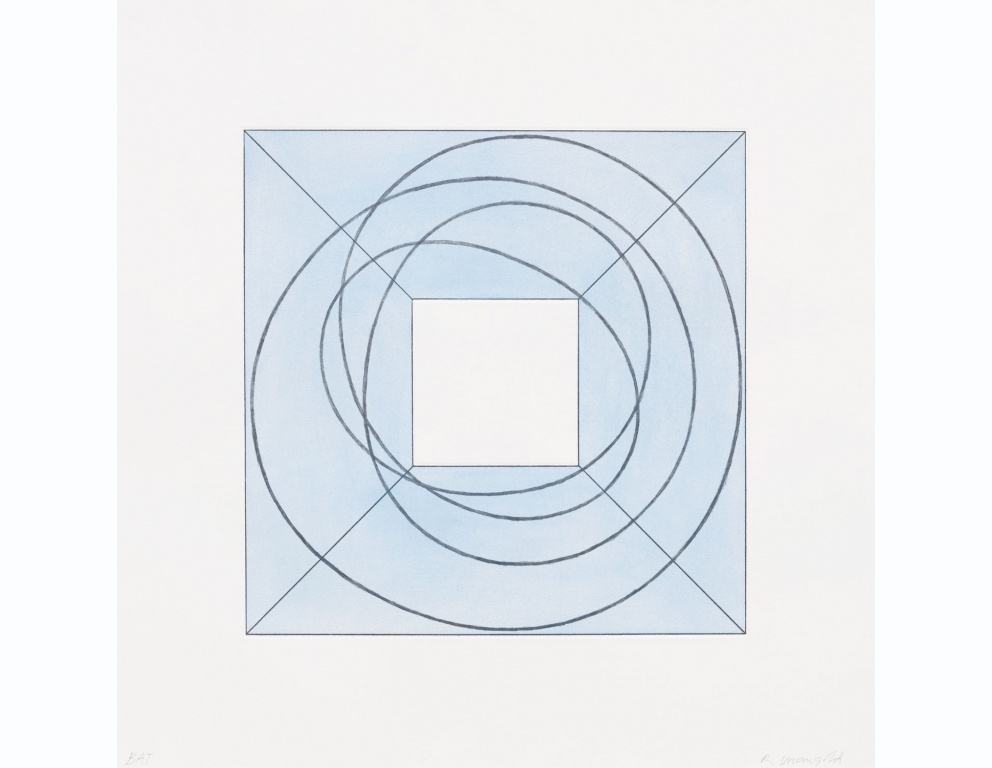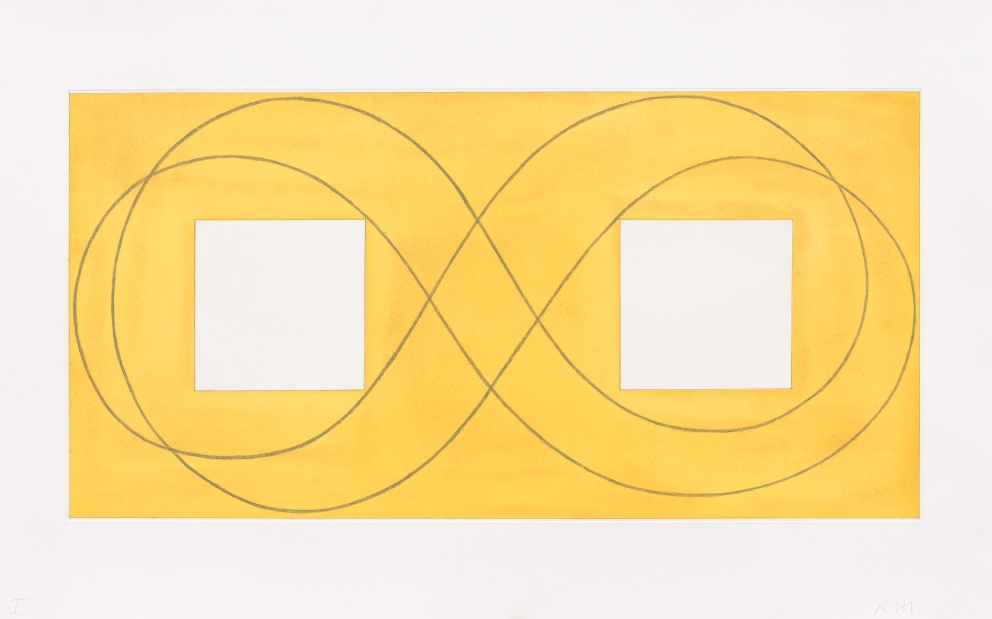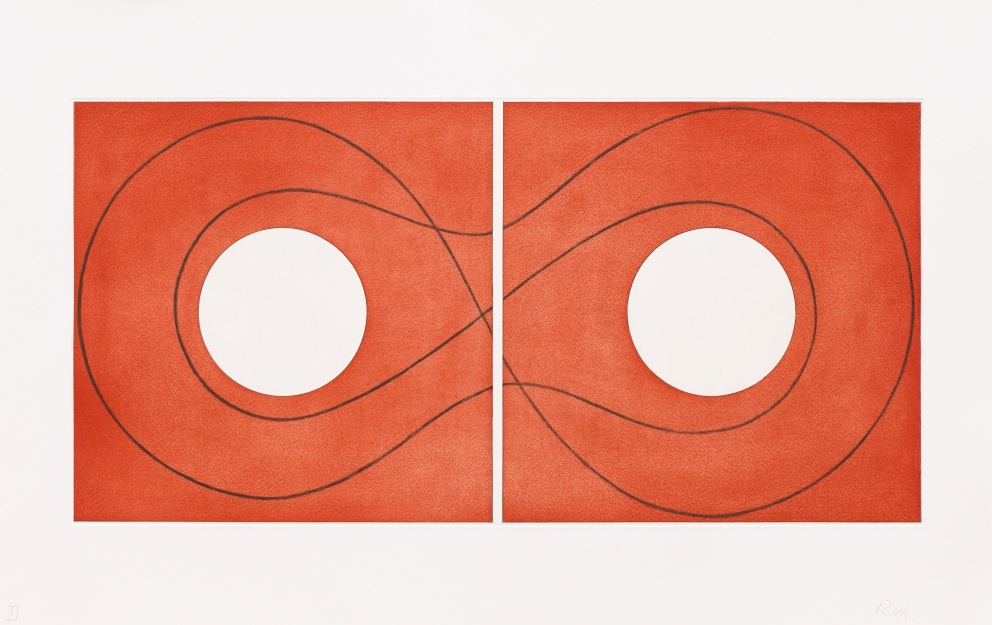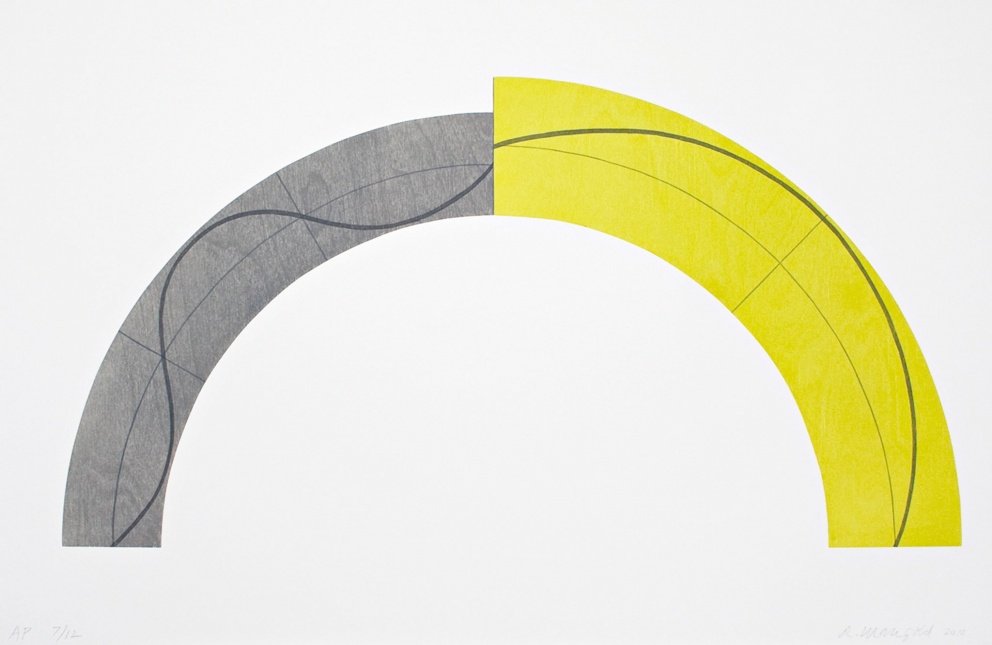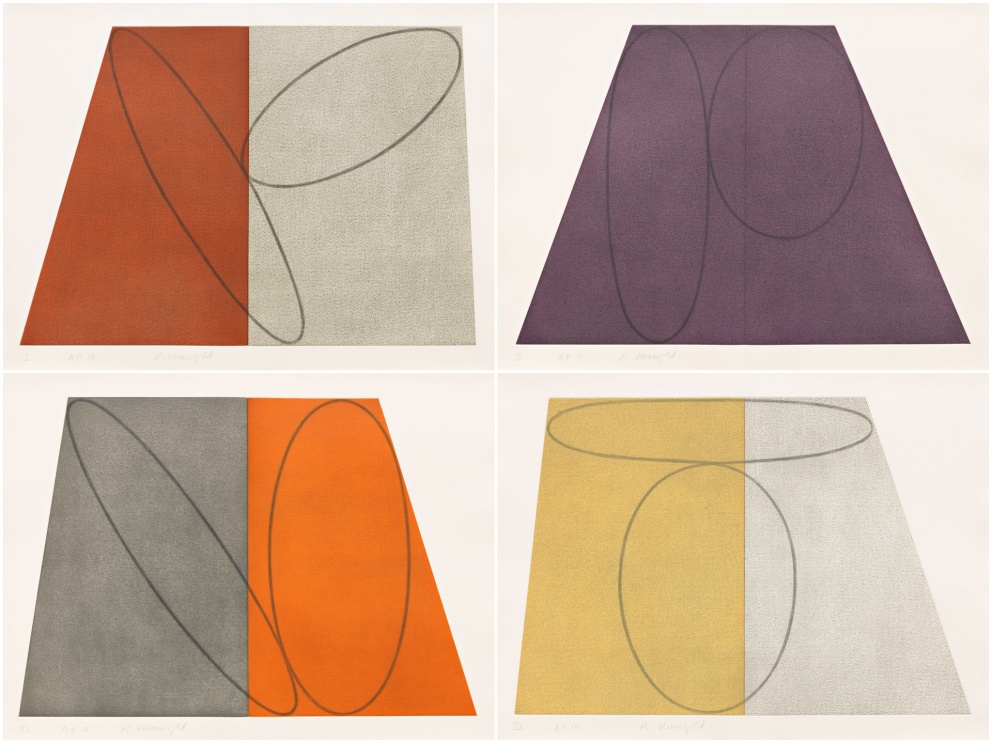I’ve always had the desire to make the work a unity, to make all the elements—the periphery line and the internal line, the surface, color—equal, totally locked together.1
-
Robert Mangold studied at the Cleveland Art Institute and at Yale University, but also among fellow artists and writers as an employee of The Museum of Modern Art. He and his co-workers Sol LeWitt and Robert Ryman were labeled the “Bowery Boys” by Lucy Lippard, famed curator and critic, after they all began working in studios near one another off the Bowery. Mangold’s association with “minimalism” began with his inclusion in both a 1966 Guggenheim Museum exhibition and a 1967 Jewish Museum exhibition focused on systems and formal structures in geometric abstraction. In 1969, Mangold chose to decamp to Upstate New York with his wife, the accomplished artist Sylvia Plimack Mangold, where they continue to live and work. Mangold’s prints, paintings and drawings are represented in the collections of over eighty-four public institutions.
As a printmaker, Mangold has collaborated with Pace Prints since 1993 as well as with many other acclaimed studios and their master printers. The collaborative process of printmaking extends his work beyond his studio, where a series of drawings may become the starting point for both prints and paintings simultaneously. Prints from every decade of the past fifty years can be seen in the concurrent gallery exhibition at Pace Prints, 32 East 57th Street. In addition, Robert Mangold: Painting 2017–2019, is on view at Pace Gallery through November 14.
-
From the time Mangold made his first prints in the late 1960s and the 1970s, they possessed significance parallel to his paintings. For Mangold, printmaking, drawing, and painting are ways of investigating process and visual ideas. Each medium is a separate way of getting to know an image, to inhabit an idea and make it his own.2
-
-
Robert Mangold creates work in a non-hierarchical manner. This process allows for a drawing or print to become a completed work as well as a starting point for new work.
A lot of times one image leads to another, something either in the opposite direction or something that’s a continuation. The artist allows for the possibility that a work can evolve when suddenly some door opens [to] possibilities and you’re suddenly going on [to], not a new image, but a new way of looking at the image.
-
“When I start a group, I don’t know how many works are going to come out of that group, but I like the idea of working an idea again and again, because it allows me to carry an idea further than just doing one-shots. When I work within these groups, I set up a series of you could say arbitrary rules of what the line is going to do, and what shape the form is going to take. It could be that the top and bottom are going to be parallel to the floor and ceiling so there’s going to be a horizontal on top and bottom and let’s say it’s a quadrilateral of some kind. That sets the logic about the shape, while there is another logic informing the line; it is going to touch all four sides or something. Within that interaction there’s always variation and possibility.” 3
-
In 1993, as part of a panel on geometric art at the Whitney Museum of American Art, Mangold elaborated on geometry as a building block for his work, rather than its subject:
Whatever role geometry plays in my work I see as incidental. I have used circles, squares, ellipses and all manor of four- and many-sided forms and combined forms. I see no difference between this and the way a writer or poet would use words and made-up words to express an idea: the key is to express an idea.
Abstraction is an idea, geometry is not.
-
-
Footnotes
1. I’ve always had the desire to make the work a unity… Richard Shiff, in Robert Mangold, Phaidon (London, England), 2000, p. 9.
2. From the time Mangold made his first prints... Adam Weinberg, in Between the Image and Object: The Prints of Robert Mangold, exhibition catalog, Addison Gallery of American Art Phillips Academy Andover, Massachusetts, 2000.
3. When I start a group, I don’t know… "Robert Mangold with John Yau, Brooklyn Rail, March 2009.
4. Whatever role geometry plays in my work... Robert Mangold, Phaidon (London, England), 2000, p. 164.
All additional quotes, videos and interviews © Pace Editions
Many thanks to Betsy Senior for her assistance with this exhibition
All works of art © Robert Mangold
Online catalogue raisonné of Robert Mangold's prints.

